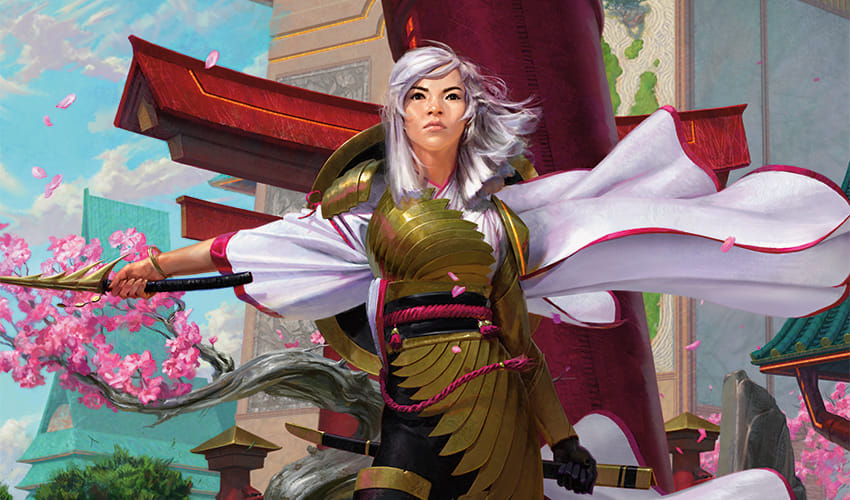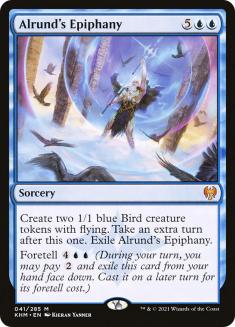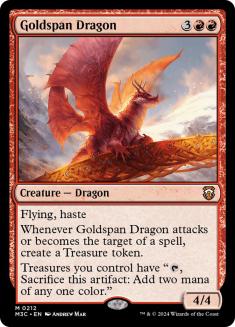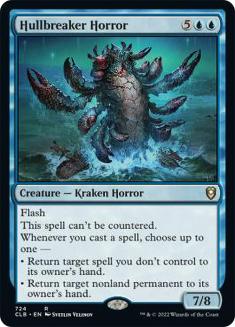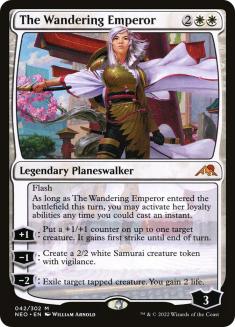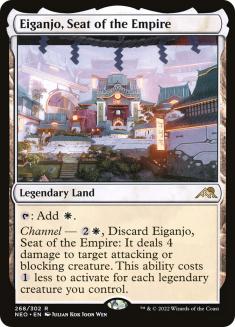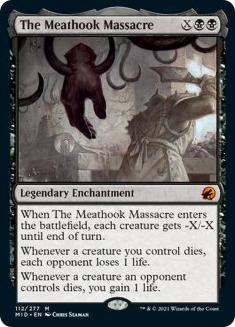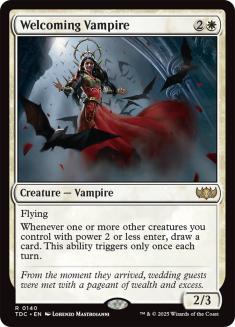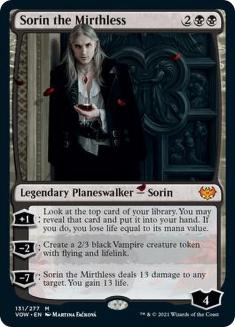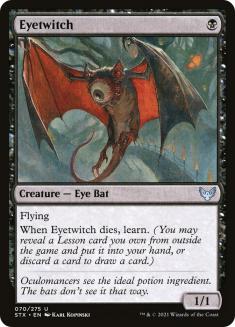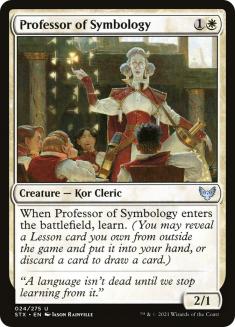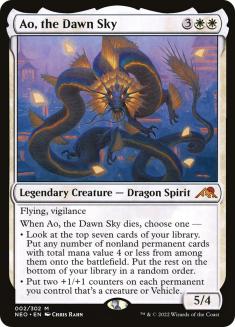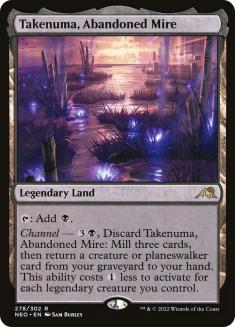About a month ago, I was a big proponent of “if you’re not playing Izzet in Standard, you’re doing something wrong.” It was clearly the best deck in the format and was putting up the best results as well. Since then, we’ve had three format bans (two of which were aimed at Izzet decks) and an entire new set released whose focus seemed to be non-Izzet cards, so things were bound to change. If we look at the latest tournaments on MTGO, it’s with great delight that I can tell you that the winning deck is now…
… Izzet control with no new cards whatsoever. Say what?
In fact, the winner of the last two Standard challenges was Izzet Control, and what’s more, it was actually the same person!
Creatures (6)
Lands (11)
Spells (43)
- 5 Mountain
- 4 Island
- 1 Negate
- 1 Disdainful Stroke
- 4 Spikefield Hazard
- 1 Cinderclasm
- 4 Jwari Disruption
- 1 Behold the Multiverse
- 1 Saw It Coming
- 1 Crush the Weak
- 1 Battle of Frost and Fire
- 2 Prismari Command
- 3 Expressive Iteration
- 3 Unexpected Windfall
- 4 Dragon's Fire
- 1 The Celestus
- 2 Burn Down the House
- 2 Memory Deluge
- 2 Fading Hope
Sideboard

Creatures (6)
Lands (11)
Spells (43)
- 5 Mountain
- 4 Island
- 1 Negate
- 1 Disdainful Stroke
- 4 Spikefield Hazard
- 1 Cinderclasm
- 4 Jwari Disruption
- 2 Behold the Multiverse
- 1 Saw It Coming
- 1 Crush the Weak
- 1 Battle of Frost and Fire
- 1 Prismari Command
- 3 Expressive Iteration
- 3 Unexpected Windfall
- 4 Dragon's Fire
- 1 The Celestus
- 2 Burn Down the House
- 2 Memory Deluge
- 2 Fading Hope

Does O_Danielakos know something the rest of us don’t? Is Izzet Control still the best deck even after the bans?
In my opinion, no. Izzet Control is still a viable deck, as O_Danielakos’s success with it indicates, but it’s no longer far and away the best deck like it once was. In reality, everything is just a bit worse. You’re still favored versus the midrange decks because you have so much card drawing, but you used to be a huge favorite, and now you’re a small one. You used to be able to make up for some bad matchups by having great matchups, and now these great matchups are merely okay, so you end up with a deck that’s much closer to just being even-ish versus everything.
If Izzet Control isn’t the best deck, then what is the best deck? Right now, I would say that there isn’t one to the degree that Izzet Epiphany was before. There’s simply no deck that is a “must play” and there are many options if you want to succeed. One of these options is Orzhov Midrange, which I think is the deck that gained the most from the bans and the new set. I would not have recommended Orzhov Midrange before; now it’s a Tier 1 deck that has the potential to be the best deck in the format.
Here are two sample Orzhov decks from Challenges:
Creatures (16)
- 2 Valki, God of Lies
- 4 Professor of Symbology
- 4 Shambling Ghast
- 2 Edgar, Charmed Groom
- 2 Welcoming Vampire
- 2 Ao, the Dawn Sky
Planeswalkers (5)
Lands (20)
Spells (19)

Creatures (14)
Planeswalkers (6)
Lands (18)
Spells (22)

Originally, Orzhov decks were more on the control side of the spectrum, but nowadays with Wedding Announcement and Edgar, Charmed Groom they’re true midrange decks, with the ability to win games quickly or slowly. They will never be as quick as the dedicated aggro decks, of course, but it’s a mistake to assume they can’t pressure you. If you durdle too much, they will either kill you or generate an unassailable battlefield presence.
Between all the removal, blockers, and The Meathook Massacre, the deck is strong at beating opposing creatures, and the Lessons, planeswalkers, card drawing, and recursion mean it’s also quite good at grinding, so it’s a deck that can really play on multiple fronts depending on what each game requires, and most of the time you will assume the opposite role of your opponent’s. It might not look like the previous midrange decks of the past (those were usually green, at least the good ones), but it very much is.
So why is Orzhov Midrange a Tier 1 deck now, when it wasn’t a deck I would really recommend before? There are three reasons:
The main reason is a downswing in both the popularity and the power of the Izzet decks. Izzet Epiphany used to be a pretty bad matchup, and there wasn’t much you could do about it. That alone was enough to keep the Orzhov decks at bay. Nowadays, the Izzet decks still exist, but they’re less popular, and they also lack their single best card against you.
One of the big factors that made Izzet Epiphany such a bad matchup was that the card Alrund’s Epiphany had a way of ignoring everything you do. Goldspan Dragon and Hullbreaker Horror are no doubt powerful cards, but they can be killed, they can be blocked, they can be raced, and they can be discarded, whereas Alrund’s Epiphany was immune to all of these things. It didn’t matter what was going on in the game before; if your opponent started copying and chaining Epiphanies, you were dead. This isn’t true with the new win conditions. You can’t just spend ten turns losing the game, cast a Goldspan Dragon, and hope all is forgiven.
The second reason is that I believe it gained some good new cards that are particularly efficient at dealing with certain issues it previously had. The Wandering Emperor, for example, is a powerful card that can either serve as a removal spell or a threat, which is exactly what you want in this deck. This deck also makes particularly good use of the Legendary Channel Lands from Kamigawa: Neon Dynasty, and if we add Eiganjo, Seat of the Empire to The Wandering Emperor, we now have two new ways of dealing with Goldspan Dragon without giving them a Treasure for targeting it (though they still get to attack).
The third is that Kamigawa: Neon Dynasty seems to have pushed small aggressive decks. There are several powerful one- and two-drops (particularly in red), there are Ninjas, Equipment, Vehicles, and so on. This is very good for Orzhov, as all these decks struggle to beat cards like The Meathook Massacre, Shambling Ghast, and creature tokens. Take, for example, this deck that Willy Edel got second place with at one of the Challenges:
Creatures (23)
- 4 Reckless Stormseeker
- 4 Voldaren Epicure
- 1 Goro-Goro, Disciple of Ryusei
- 2 Lizard Blades
- 4 Ogre-Head Helm
- 4 Thundering Raiju
- 4 Rabbit Battery
Planeswalkers (4)
Lands (5)
Spells (28)
Sideboard

This deck does not want to see any of those cards in front of it, and this is the kind of deck that Kamigawa: Neon Dynasty is incentivizing. If we see more decks like this, Orzhov’s stock can only rise.
If we look through tournaments and ladder, Orzhov Midrange is a pretty popular deck, but there are a ton of different ways to build it, so let’s analyze some of the contenders:
As mentioned before, I think The Wandering Emperor is a great fit for this deck, as it works with all sort of play patterns (whether you’re being defensive or aggressive), and this deck has to adapt to what the opponent is doing. I think you should definitely play multiple copies of it in the deck, but I don’t think four is the right amount, as it does not stack that well in multiples and there are some other four-mana cards I want to play instead, so right now I have two copies (but I can see three copies being right).
Everyone plays The Meathook Massacre, but numbers range from one to four copies. Personally, I think the card does a lot for this deck, and every mode is useful in the right situation — sweeping the battlefield with your planeswalkers, gaining life, and draining them all come up relatively often, so I’m a fan of multiple copies of this card. It is “half legendary” in the sense that some of the modes don’t stack, but you can still cast more than one copy. My inclination is to play three or four, depending on what you expect the format to look like. Right now I have three, but it wouldn’t surprise me if I moved it up to four in the coming weeks.
Welcoming Vampire can be very strong in the right game, and in this deck it’s quite easy to trigger; you can even trigger it at instant speed with The Wandering Emperor. That said, I think four copies is too many. I like playing two.
I think Sorin the Mirthless is usually going to be worse than The Wandering Emperor, but there’s real value in having split copies of them, because they’re good in different situations and also because they’re legendary. While I would not play more than two Sorins, I think the first and second Sorin are definitely better than the fourth Emperor, for example. Right now, I have two of each, but maybe it should be three-and-one in favor of Emperor.
Most Orzhov decks use the Lesson package in the sideboard, but the way to learn changes between lists. Some people use Eyetwitch, some use Professor of Symbology, and some use a mix. I think if you rely heavily on the sacrifice aspect of the deck, Eyetwitch can be good, but overall Professor of Symbology is just going to be a better card, and I don’t want to rely that much on the sacrifice aspect anyway (I’m not playing four Deadly Dispute, for example). A 2/1 attacker is much better at pressuring the opponent than a 1/1 flyer, and a lot of the time it’s important to get the Lesson (or the looting) immediately — sometimes you’re missing your third land drop, for example, and then your Eyetwitch just doesn’t ever die.
Ao, the Dawn Sky is a pretty strong card. The body is powerful, it attacks and defends, and if they kill it, you can get good value regardless of the situation. If the battlefield is stalled, giving all your creatures +2/+2 permanently will almost always be enough to swing it for you, and if they cast a sweeper of some sort, then Ao’s first ability can help you rebuild. Seven cards is a lot, so even though you’re not often going to get two permanents (since a lot of stuff in the deck costs three or four), you’re usually going to hit something good (ideally a four-drop).
The big question for me is whether Ao, the Dawn Sky is better than just having more copies of Lolth, Spider Queen. I’m a big fan of Lolth and I think it’s a better card than Ao, but, again, it’s legendary. I think I want three Lolth and one Ao, and then if there’s room for another five-drop, I’d make that a second Ao. Currently, I have no room, but the second Ao is the “61st” card in my deck. If something turns out to be bad, it’s the next card coming in.
I think both Eiganjo and Takenuma are pretty good in this deck. The first of each land is basically free (so I assume the fact that some people don’t play them was a card availability issue, as people can’t be that scared of Boseiju, Who Endures), and I’m pretty sure the deck should play at least a second Eiganjo (and possibly a second Takenuma as well). Overall, I think this deck should play 25 lands, even though it’s a relatively cheap deck, because there are a lot of good utility lands to play.
The sideboarding is a bit up in the air, since the format is still quite new. Five slots are taken up by Lessons — Confront the Past, Environmental Sciences, Pest Summoning, Mascot Exhibition, and Necrotic Fumes — and while you could play fewer, I think they all play an important role in this deck; there’s no Lesson that you never want to get. This leaves only ten slots, which means you want things that are more generic in nature, and that you can sideboard in versus different people. This is what I have right now:
- 1 Confront the Past
- 1 Environmental Sciences
- 2 Go Blank
- 1 Mascot Exhibition
- 1 Necrotic Fumes
- 2 Duress
- 2 Doomskar
- 1 Pest Summoning
- 2 Soul Transfer
- 2 Reckoner Bankbuster
I’m not entirely sure which cards are the best in the mirror, to be completely honest. I really want a card that just wins it, but I can’t find anything, so I’m just playing a mix of discard spells, some card drawing, and Soul Transfer, which is the best answer to planeswalkers. It’s not exactly trivial to trigger it, but in a long game, it’s not that hard with Treasure tokens alongside The Meathook Massacre or Wedding Announcement, and by the time you want to use both sides of it, it’ll probably be on.
This is my build:
Creatures (13)
- 4 Professor of Symbology
- 4 Shambling Ghast
- 2 Edgar, Charmed Groom
- 2 Welcoming Vampire
- 1 Ao, the Dawn Sky
Planeswalkers (7)
Lands (18)
Spells (22)

Orzhov Midrange is not without its bad matchups, but it’s now in the same situation Izzet Epiphany was before (though in a smaller scale) in that the good matchups (the creature decks) are good, and the bad matchups (the Izzet decks) are merely slightly bad. Right now, there should also be way more good matchups than bad, so you should give this deck a try if you haven’t yet.

